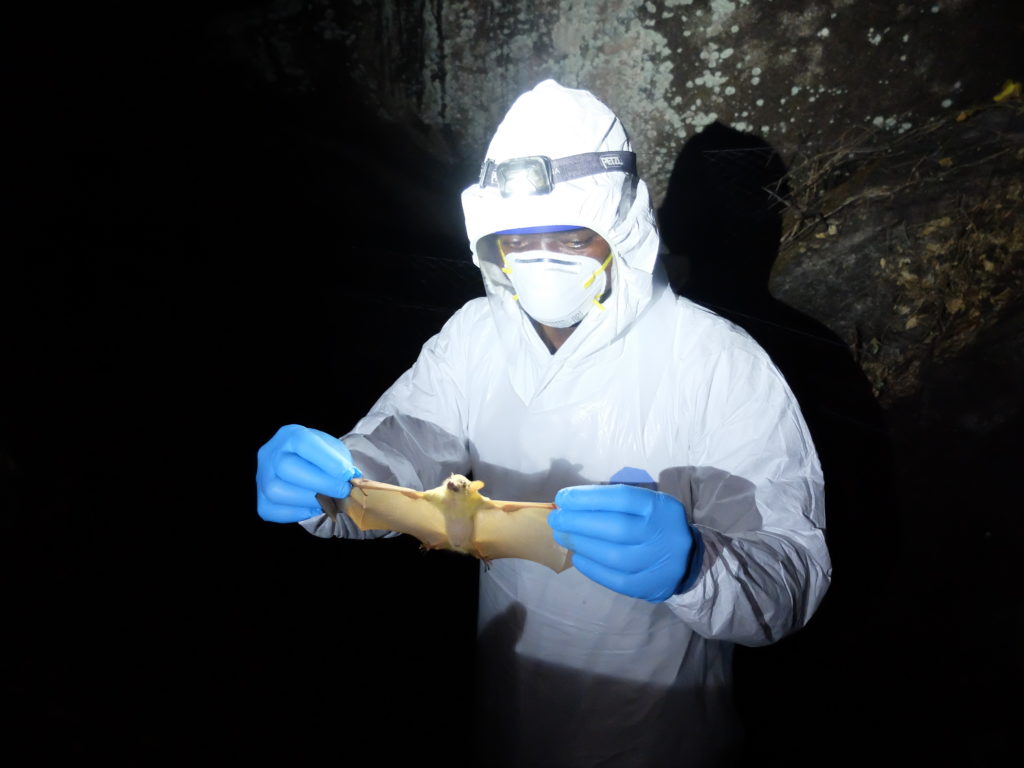




Zoonoses, or diseases that spread from non-human animals to humans, have been known to medical science since the late 19th century, and have since been understood to be the cause of infectious disease epidemics and pandemics. COVID-19 is widely accepted to be a zoonotic disease caused by a pathogen (SARS-CoV-2) which spilled over from animals yet to be identified to humans, possibly in 2019. At the same time, SARS-CoV-2 has been shown to “spill back” in a process of so-called reverse zoonosis from humans to animals such as cats, mink and gorillas, etc. In the case of mink, it has been observed to spill back again to humans as well as to wild animals. Much debate and speculation has surrounded the natural disease reservoir of SARS-CoV-2, as well as the intermediary host(s) leading to its spillover to humans. Bats, animals that harbour several coronaviruses, are currently seen as the most likely natural reservoir of SARS-CoV-2.
Employing photography, film, diagrams and maps, the visualisation of the zoonotic aspects of COVID-19 has played a significant role not only in the epistemics, poetics and politics of identifying animals involved in the spillover leading to the COVID-19 pandemic, but also in representations and debates around the zoonotic and epizootic risk posed by mink farms. The contributions to this cluster illuminate that while visualisations of zoonotic aspects of COVID-19 carry significant traces and legacies of previous, and particularly colonial, modes of visually configuring zoonosis, they also often reflect and foster new tropes, agendas and epistemic, ontological, biopolitical and geopolitical frameworks. Visual regimes of zoonosis are entangled in dialectics of visibility and invisibility that often render interspecies processes and relations invisible through visualisation, and vice-versa. While this forms part of a broader semiosis of non-human life within the prism of naturalist ontologies, it is also part of historically dynamic configurations of animal-to-human infection.
In particular, within the framework of Emerging Infectious Diseases, the visualisation of COVID-19 as a zoonotic disease relies on shifting scales of causation, anticipation and eventalisation that render the pandemic knowable and actionable, primarily, if not exclusively, from a human vantage point. Regardless of debates and investments on One Health during “peacetime”, in the context of the pandemic, human exceptionalism and the Victorian imagination of a disease-free future for humanity have become the paramount frameworks of approaching non-human animals. This not only renders animal health visible only insofar as it concerns human health, but also removes attention from the complexities of disease ecology and the long-term temporalities of zoonotic reservoir formation and disease maintenance, as well as cross-species infection and emergence.
As experience of the SARS, swine flu and Ebola epidemics earlier this century indicates, exploring new ways of visualising COVID-19 as a zoonotic disease should be part of a broader, urgent need to reconceptualise zoonosis per se, and to develop a new language and conceptual toolkit for understanding and approaching animal diseases that, unlike One Health, will prove effective and resilient in the context of pandemic emergencies.